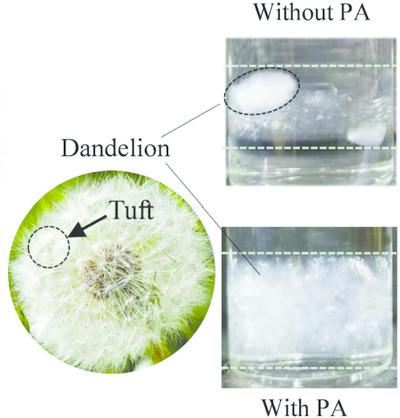当前位置:
X-MOL 学术
›
J. Appl. Crystallogr.
›
论文详情
Our official English website, www.x-mol.net, welcomes your feedback! (Note: you will need to create a separate account there.)
Morphology control of laser-induced dandelion-like crystals of sodium acetate through the addition of acidic polymers
Journal of Applied Crystallography ( IF 6.1 ) Pub Date : 2021-07-07 , DOI: 10.1107/s1600576721005409 Yao Liu , Huilin He , Yanjun Liu
Journal of Applied Crystallography ( IF 6.1 ) Pub Date : 2021-07-07 , DOI: 10.1107/s1600576721005409 Yao Liu , Huilin He , Yanjun Liu

|
Crystal growth speeds, crystal sizes and the morphology of sodium acetate (CH3COONa) crystals in the presence of polymaleic acid and polyacrylic acid with different concentrations were investigated in supersaturated solutions of sodium acetate. The technique of non-photochemical laser-induced nucleation (NPLIN) was used to produce initial crystallites of anhydrous CH3COONa. The anhydrous CH3COONa crystal growth in solution after laser irradiation resembled the formation of dandelion seed heads. Even though NPLIN could offer temporal–spatial control of crystal nucleation without the addition of acidic polymers, the crystal growth rates were heterogeneous for crystallites along the laser pathway, which led to irregular crystalline sizes and morphologies. Here, a controllable approach from crystal nucleation to crystal growth has been designed through the addition of acidic polymers in the laser-induced growth of anhydrous CH3COONa crystals. In the presence of an acidic polymer, both the crystal growth and the morphological modification were controlled from tuft-shaped crystals to dandelion-like crystals. As bulk solid thicknesses and crystal growth speeds can be modified by different mass fractions of acidic polymer, a mathematical model was established to analyse the dynamics of crystal growth under the effect of acidic polymers. The model reproduces remarkably well the experimental trend and predicts experimental results. The changes in supersaturation and the number of nuclei through the addition of acidic polymers were analysed to investigate the underlying mechanism of morphological difference.
中文翻译:

通过添加酸性聚合物控制激光诱导醋酸钠蒲公英状晶体的形态
在乙酸钠的过饱和溶液中研究了在不同浓度的聚马来酸和聚丙烯酸存在下乙酸钠(CH 3 COONa)晶体的晶体生长速度、晶体尺寸和形态。非光化学激光诱导成核 (NPLIN) 技术用于生产无水 CH 3 COONa 的初始微晶。无水CH 3激光照射后溶液中 COONa 晶体的生长类似于蒲公英种子头的形成。尽管 NPLIN 可以在不添加酸性聚合物的情况下提供晶体成核的时空控制,但沿激光路径的微晶的晶体生长速率是不均匀的,这导致不规则的晶体尺寸和形态。在这里,通过在激光诱导的无水 CH 3生长中添加酸性聚合物,设计了一种从晶体成核到晶体生长的可控方法COONa 晶体。在酸性聚合物的存在下,晶体生长和形态修饰均由簇状晶体控制为蒲公英状晶体。由于酸性聚合物的不同质量分数可以改变块状固体的厚度和晶体生长速度,因此建立了数学模型来分析酸性聚合物作用下晶体生长的动力学。该模型非常好地再现了实验趋势并预测了实验结果。通过添加酸性聚合物对过饱和度和核数的变化进行了分析,以研究形态差异的潜在机制。
更新日期:2021-08-05
中文翻译:

通过添加酸性聚合物控制激光诱导醋酸钠蒲公英状晶体的形态
在乙酸钠的过饱和溶液中研究了在不同浓度的聚马来酸和聚丙烯酸存在下乙酸钠(CH 3 COONa)晶体的晶体生长速度、晶体尺寸和形态。非光化学激光诱导成核 (NPLIN) 技术用于生产无水 CH 3 COONa 的初始微晶。无水CH 3激光照射后溶液中 COONa 晶体的生长类似于蒲公英种子头的形成。尽管 NPLIN 可以在不添加酸性聚合物的情况下提供晶体成核的时空控制,但沿激光路径的微晶的晶体生长速率是不均匀的,这导致不规则的晶体尺寸和形态。在这里,通过在激光诱导的无水 CH 3生长中添加酸性聚合物,设计了一种从晶体成核到晶体生长的可控方法COONa 晶体。在酸性聚合物的存在下,晶体生长和形态修饰均由簇状晶体控制为蒲公英状晶体。由于酸性聚合物的不同质量分数可以改变块状固体的厚度和晶体生长速度,因此建立了数学模型来分析酸性聚合物作用下晶体生长的动力学。该模型非常好地再现了实验趋势并预测了实验结果。通过添加酸性聚合物对过饱和度和核数的变化进行了分析,以研究形态差异的潜在机制。



























 京公网安备 11010802027423号
京公网安备 11010802027423号